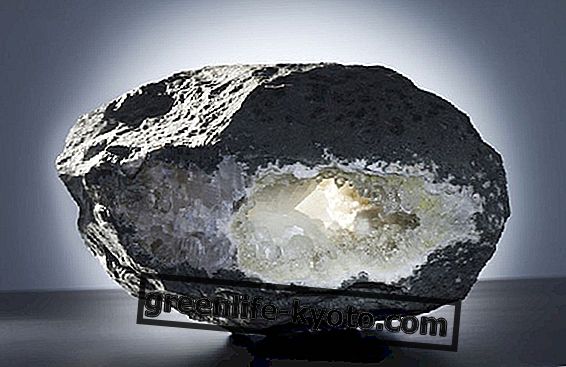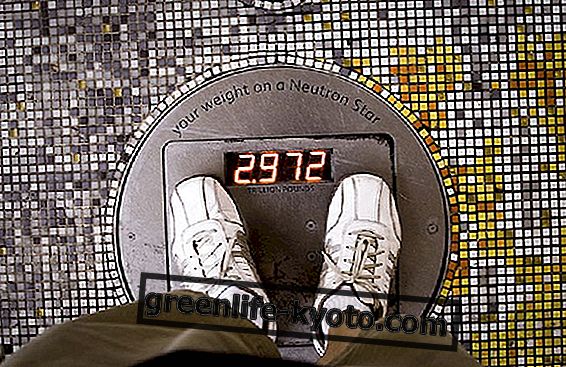
Fibromyalgia is a painful condition defined as a musculoskeletal syndrome causing pain and organic fatigue, unrecognized for years, which affects the muscles and tendons, as occurs in arthritis, but unlike inflammation it does not recognize an inflammatory disease nor the deformity of the articular heads.
The points mainly involved in Fibromyalgia, are called " tender points" are symmetrical, on both sides of the body, such as at the base of the skull and the neck, for example, on top of the shoulder, on the thoracic cavity, between the clavicle and the spine, on the forearm, in the upper part of the hip, in the upper part of the buttocks, or at knee level, etc.
The causes of Fibromyalgia in Western Medicine are still unknown and it is hypothesized that they may be: alterations in neurotransmitters, hormonal imbalances, sleep alterations, stress conditions, and again, one of the latest theories suggests that the reduced perception of pain is the cause of a greater muscular sensitivity to repeated micro- traumas, in which various factors come into play such as: physical trauma, stress, fatigue, humidity and cold, premenstrual syndrome, all capable of worsening the clinical picture described above.
Diagnosis : there are no specific laboratory tests, but they are required to rule out other types of diseases that can cause similar disorders such as hypothyroidism. The preferred specialist for the diagnosis of fibromyalgia is the rheumatologist. The main symptoms are borne by various parts of the body: the pain that is the main symptom can be concentrated at the level of the neck, shoulders and arms, or involve the whole body . Its severity may vary based on stress, climate, sleep, or during the entire day. The pains caused by fibromyalgia seem to have no limit. They are consistent in their intensity and in their diffusion . They can be persistent pains but can also vary in intensity, duration and frequency at the level of the painful area, they could range from "a fa-all-male syndrome" to "migrating pains". Patients describe them as excruciating muscular pains, with burning, or cramps and wounds, such as knife blades.
Very often, in the morning, pain and stiffness are even more pronounced, and muscle groups are deeply tired. Pain may occur in the jaw joints, facial pain (pseudo trigeminal neuralgia, atypical facial pain) and problems in the teeth and maxillary sinuses may also be added. Often, the teeth are extracted and the patient complains of a phantom pain at the level of the tooth already extracted . Swallowing and tongue disorders are known as neck-tongue syndrome . It is estimated that over 90% of fibromyalgia patients also experience fatigue, tiredness and difficulty sleeping. The most frequently reported "collagated" symptoms are: headache and migraine, tingling in the hands, painful sensations similar to pinpricks, irritable colon and many others. These symptoms can be present variations, but hardly all of them are found in the same subject. The only real medium-long term consequence hypothesized as a result of fibromyalgia is the onset, in 20-40% of patients suffering from abdominal pain, constipation, attacks of diarrhea, flatulence and nause, of irritable bowel syndrome, probably in subjects already predisposed.
Fibromyalgia therapy
The Western Medicine proposes as a cure the pharmacological therapy to which it is essential to associate physical activity and a complete information and education of the patient, for example concerning sleep hygiene, a determinant factor, able to improve or eliminate the triggering factors and / or in able to significantly worsen the pain symptoms: - as regards drugs, paracetamol, anti-inflammatories and painkillers of various categories are mainly used. - to improve sleep quality, antidepressants and muscle relaxants are often prescribed, as well as drugs active on nerve transmission, which have given appreciable results only in a small proportion of patients. The traditional diagnosis is based on the individualisation of 11 of 18 sensitive points ( tender points ) and / or painful points .
Traditional Chinese Medicine ( TCM ) is based on very ancient texts, whose precise dating is difficult, as the texts were integrated over thousands of years of Chinese history and culture. It is not, in fact, a work written by a single author, but the sum of the knowledge of the ancients, which does not split philosophical thought from that of medicine. The final draft of the oldest Chinese medical text, the Huang Di Nei Jing - Classic Book of the Yellow Emperor, composed of two parts: So Wen - The simple questions of the Yellow Emperor to his doctor ; the Ling Shu - Spiritual Pin, is traced back to the Han dynasty in 200 BC.
Another important text for the knowledge of TCM is the Nan Jing or Book of Difficult Questions, which collects interpretations and explanations on the more complex topics not covered in the Nei Jing, of which it is a compendium; the philosophical vision that permeates the whole work is the Taoist vision, known through the Tao-Te Ching, of Lao Tzu, a historical figure of the 4th or 7th century. B.C. Many are also the posthumous texts found over the years and all in a more or less evident way refer to the aforementioned texts so as to become the cornerstone of scientific knowledge and Chinese culture. Those early writings were followed by long years of war between dynasties, migrations of peoples, book burnings, then the enlightened Confucius guide began and in China the whole apparatus of medical and philosophical knowledge underwent interpretations, alterations, comments and observations, which today are the foundations of TCM .
All these texts have helped us and still help us to understand and frame diseases both from the point of view of their etiopathogenesis, and from the point of view of their most intimate mechanisms, since in Chinese medicine the human organism is understood not so much as an anatomical structure of flesh and bones, but rather as a set of energy flows whose alteration or stagnation can determine disease or dysfunction .
On the basis of this energetic view of diseases it is also possible to frame Fibromyalgia, that is this particular pathology characterized by the presence of generalized muscular pain whose diagnosis is particularly difficult because, according to Chinese Medicine, it is not identified in a particular pathological picture, but in more different pathological patterns, each well characterized both by origin, and by a set of specific signs and symptoms, whose only common denominator is the systemic presence of pain localized to the muscles and tendons of the body . The punctual diagnosis of this syndrome is, as for any other disease, the indispensable premise for an effective therapy of the same, whether it is the patient's approach with TCM, or the use of Western Medicine.
Acupuncture as an energy medicine, which is part of traditional Chinese medicine ( TCM ), is certainly the best cure for Fibromyalgia, as it intervenes directly on the causes of pain understood as energy stagnation . In Acupuncture, in fact, the theory of pain is expressed by the saying: " Bu tong ze tong, tong tong ze bu " which means " free flow: no pain, no free flow: pain ", where pain is considered as the interruption of the free flow of vital energy (or qì ) within the human body. So in acupuncture the fibromyalgia syndrome is seen as a painful syndrome where a blockage of vital energy has been created, which no longer circulates, with an energy jam causing painful symptoms in the various parts of the body .
In Fibromyalgia, then, where pain is the dominant symptom, disharmonies of important organs are often associated such as: the liver ( gan ), the spleen ( pi ), tl kidney (shen ) and the heart ( xin ), which preside over the main functions of the body, with a consequent deterioration of the functionality of the whole organism as a whole, especially in the advanced states of the disease. This is because the fundamental concept of TCM is related to energy flow, which "travels" through the meridians ( never, energy transport channels / qi), which connect and connect the various organs of the body between them; it is possible to imagine how a block or an altered energy flow in a point can be so easily passed downstream and upstream of the point itself, creating alterations in the functioning of the various organs and viscera.
In TCM, in particular, the pain theory is certainly peculiar and is well expressed in this famous saying: " Buong tong tong, tong tong bu " which means " free flow: no pain, no free flow: pain " . In practice, pain is considered to be an interruption of the free flow of Qi within the human body. The disruption or interruption of the free flow of Qi that occurs in Fibromyalgia and which causes the pain symptom, is usually associated with disharmonies of important organs such as: liver ( gan ), spleen ( pi ), kidney (shen ) and heart ( xin ), which govern the main functions of the body such as blood circulation and tissue nutrition, digestion and filtration; all important and prominent functions for the well-being of the organism and the organic flow of energy.
Acupuncture in this pathology offers treatments aimed at alleviating pain, which is the most disabling symptom for patients, through the stimulation of particular acupoints identified on the main energy meridians of the organs involved in the qì energy circulation. The arrangement of the meridians / mai is rather complex and it is possible to schematize it as a network in which the 12 main superficial meridians are recognized, distributed over the whole body from head to toe, which carry the vital energy of the various organs and viscera; to these must be added the secondary meridians (Distinct - Extraordinary - Lo - Muscle-tendon), which flow more deeply and allow the energy connections of the whole body. The main acupoints used in acupuncture are placed on these energy channels. By way of example we can say that the Liver / gan can be stimulated using the two main energy points of the liver meridian, which starts at the foot and ends at the chest, LV 2 and LV 3; while for the Spleen / most important they are among the many acupoints of the spleen meridian, which begins at the foot and ends at the axillary line: SP 6 and SP 9; for the kidney / shen we can consider the points of the lower limb KI 2, KI 6 and KI 7 and finally for the heart / xin find importance among the other acupoints of the heart meridian that flows in the arm and precisely: HT 7 and HT 9 In MTC the pictures referable to Fibromyalgia are classified as 'false bi' or 'false rheumatism' of the muscle-tendon tissues, in which the appearance of pain finds various causes such as: Blood and energy deficit - Liver and Kidney deficiency - Post-viral syndromes - Stasis of blood and / or Wind i nterno .
Then there are three conditions that can cause pain in TCM such as:
- Blockage of energy flow due to trauma or engorgement of energy / blood
- The stagnation of the energy of the liver following thoughts and emotions
- Energy and blood deficiency
These conditions closely related to the symptom of pain, are associated, then, to the blockage of vital energy and its circulation in organs such as Liver - Spleen - Kidney and Heart, we recognize, thus four syndromes referable to dysfunctions of the organs involved:
1. Energy stagnation / qì of the Liver : where symptoms can be activated or worsened by a stress condition. Therapeutic principles are : calming the Liver using points of the Liver meridian and circulating qì and xué with Bladder- Spleen-Pericardium acupoints .
2. Energy and blood deficiency : the most compromised internal organs and at the origin of this syndrome are the Spleen, lacking in energy and the Heart, lacking in blood, typical of a Qi and Heart Blood and Spleen Vacuum Syndrome. This syndrome tends to get complicated with the appearance of stagnation of energy and blood. Key diagnostic factor: marked fatigue with muscle weakness. Therapeutic principles are: toning energy and blood, calming the mind with points of the principal meridian of Bladder - Spleen - Stomach - Heart - Pericardium and extraordinary meridian Ren Mai or Conception Vessel .
3. Stagnation of energy and blood: the symptomatology is characterized by severe pain. Therapeutic principles are: activate the circulation of energy and blood using Bladder acupoints - Spleen - Liver - Heart - Pericardium and Ren Mai and on large intestine points for pain.
4. Deficiency of the functional activity of the Kidney : the Kidney may be deficient with respect to one or more of its own energies: yin, yang, qì, essence / jing, involving both renal roots: kidney Yin and kidney Yang ( closely related to jing ), this deficit involves the bladder; this is why the symptoms and signs that can occur are many, due to the different clinical forms: - Kidney VACUUM - BLADDER / VACUUM FORMS: these are complex syndromes related to kidney and bladder diseases, to which complex strategies correspond acupuncture, which act at various levels on many closely related organs and systems.
The therapeutic principles are: to invigorate the deficient energies and strengthen the kidney, mainly involving the kidney, bladder, conception vessel, governor vessel, biliary bladder, heart, minister of the heart, lung, small intestine and stomach.
Dr. Loredana Tocalli, Homeopathic Surgeon and Acupuncturist













